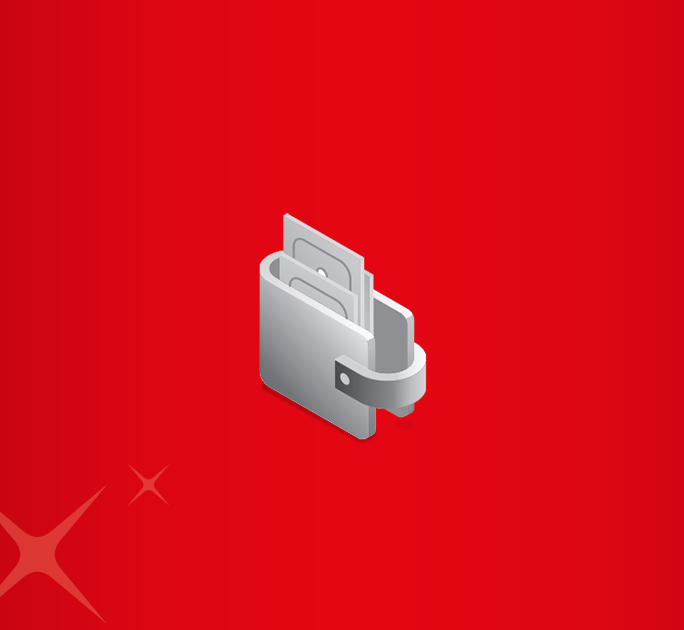- Save
- Invest
- Borrow
- Pay
- More
- Customer Services

SLR and CRR in Banking – Meaning, Objectives & Differences
Everything you should know about CRR and SLR rates and their differences
Key Takeaways
- CRR is a reserve maintained by banks with the RBI.
- It is a percentage of the banks' deposits maintained in cash form.
- SLR is an obligatory reserve that commercial banks must maintain themselves.
- It is a percentage of commercial banks' net demand and time liabilities, maintained as approved securities.
A crucial sector of any economy is its banking sector. It often serves as a mirror to the overall economy, with banking activity enabling investment decisions. Along with repo rate, reverse repo rate, etc., Cash Reserve Ratio (CRR) and Statutory Liquidity Ratio (SLR) are crucial components of banking operations. The two ratios help determine the liquidity in the banking system and indicate national inflation and growth fluctuations. So let us understand what CRR and SLR rate means and how are they different.
What is CRR in Banking?
As mentioned above, CRR stands for Cash Reserve Ratio. It is a compulsory reserve that the central bank of the country – The Reserve Bank of India (RBI), must maintain. Every commercial bank is obligated to maintain CRR, which is a specified percentage of their net demand and time liabilities.
Commercial banks must maintain the CRR in the form of cash balances with the RBI. These banks are not allowed to use the money for economic or commercial purposes.
Essentially, CRR represents the minimum percentage of deposits that a commercial bank must keep as a cash reserve with the RBI. The RBI uses CRR to maintain liquidity and cash flow in the economy.
What is SLR in Banking?
SLR stands for Statutory Liquidity Ratio. It is an obligatory reserve that commercial banks must maintain. Commercial banks may maintain this reserve requirement in the form of approved securities per a specific percentage of the net demand and time liabilities.
SLR can also be defined as a tool used to maintain the stability of the banks by restricting the credit facility they offer to their customers. Banks usually hold more than the required SLR, per RBI norms stating that they must maintain a certain amount of money as liquid assets. This helps banks fulfil their depositors' demands as and when they arise.
Current Changes in CRR and SLR
In the 2024 Monetary Policy Committee (MPC) meeting, the Reserve Bank of India (RBI) made a notable adjustment to the Cash Reserve Ratio (CRR), reducing it by 50 basis points from 4.5% to 4%. This move aims to boost liquidity in the financial system, allowing banks to have more funds available for lending, which is expected to spur economic growth.
However, there were no recent changes mentioned regarding the Statutory Liquidity Ratio (SLR). The SLR remains unchanged, indicating the RBI’s balanced approach to managing liquidity while maintaining financial stability.
What is the difference between CRR and SLR?
The following are the key differences between CRR and SLR:
|
Parameters |
CRR |
SLR |
|
Purpose |
The primary purpose of the Cash Reserve Ratio (CRR) is to ensure that banks maintain minimum level reserves with the central bank (RBI) to manage liquidity and control the money supply in the economy |
The Statutory Liquidity Ratio (SLR) aims to ensure the solvency of banks by requiring them to maintain a certain percentage of their depositis in the form of liquid assets like cash, gold, and government-approved securities. |
|
Meaning |
It is a percentage of money that a bank has to keep with the RBI. |
It is a proportion of liquid assets per a percentage of time and demand liabilities. |
|
Form |
Maintained in the form of cash. |
Maintained in the form of cash, gold and government-approved securities. |
|
Uses |
Regulates the flow of money in the economy. |
Ensures the solvency of banks. |
|
Reserved With |
Reserved with the RBI. |
Reserved with commercial banks. |
|
National Impact |
Regulates the liquidity of cash in the country. |
Maintains the credit growth of the country. |
|
Interest Earned |
No interest is earned on the CRR balance maintained with the RBI. |
Banks earn interest on the securities held as part of the SLR. |
What is the Impact of SLR and CRR on the Economy?
Impact of SLR on the Economy
The Statutory Liquidity Ratio (SLR) helps control how much money banks can lend. When the SLR is high, banks must keep more money in safe assets like cash and government bonds, which means they have less money to lend out. This helps control how much money is in the economy and can reduce inflation. When the SLR is low, banks can lend more money, which can boost economic activity but might increase inflation.
Impact of CRR on the Economy
The Cash Reserve Ratio (CRR) is another tool to control the money supply. When the CRR is high, banks must keep more money with the Reserve Bank of India (RBI), leaving them with less money to lend. This helps reduce the money supply and control inflation. When the CRR is low, banks have more money to lend, which can boost economic activity but might lead to higher inflation. A high CRR also ensures banks have enough reserves to meet customer demands, making the banking system more stable.
What Happens if Banks Don’t Comply?
If banks don't comply with RBI's SLR and CRR regulations, they face monetary penalties, operational restrictions, reputational damage, and potential legal actions. Compliance ensures stability, liquidity, and trust in the banking sector, while non-compliance can disrupt operations and harm the bank's financial health and reputation.
Final Note
Both CRR and SLR are crucial to the economy as they maintain cash flow and regulate liquidity in the country. These financial rates have an undeniable impact on the loan market of the country. The rates also change as per the changes in the economic climate of the country. You can always check the current CRR rate and SLR rates on the RBI website or reach out to your bank for more information.
Download DBS Bank app to virtually apply for a loan and enjoy reasonable interest rates and easy EMI options.
FAQs- SLR and CRR in Banking
-
Who Decides SLR and CRR?
The Reserve Bank of India (RBI) decides the Statutory Liquidity Ratio (SLR) and Cash Reserve Ratio (CRR). The RBI uses these tools to control the money supply, manage inflation, and ensure the stability of the banking system. By adjusting SLR and CRR, the RBI can influence how much money banks can lend.
-
Which Banks Maintain CRR and SLR?
All commercial banks in India, including public sector banks, private sector banks, foreign banks operating in India, and regional rural banks, are required to maintain both CRR and SLR. These requirements ensure that banks have enough liquidity and reserves to meet depositor demands and maintain financial stability.
-
What are SLR and CRR in Simple Words?
SLR (Statutory Liquidity Ratio) and CRR (Cash Reserve Ratio) are tools used by the RBI to control the money supply. The difference between CRR and SLR is that SLR requires banks to keep a certain percentage of their deposits in liquid assets like cash and government securities, while CRR requires banks to keep a portion of their deposits with the RBI in cash. These measures help manage inflation and ensure bank stability.











